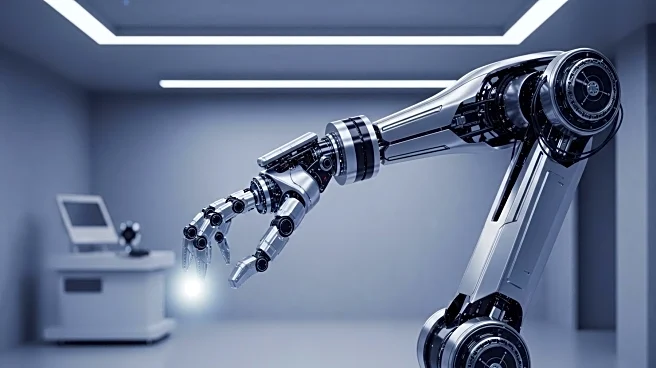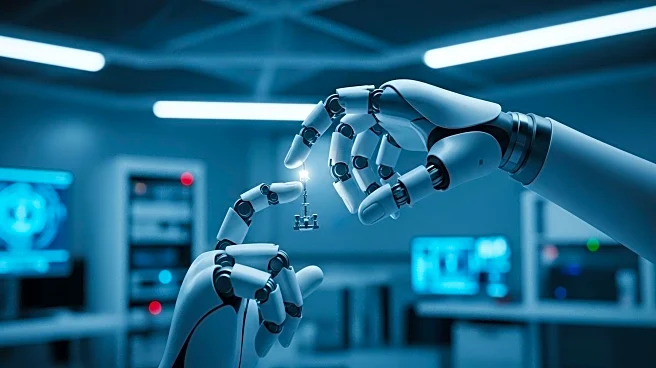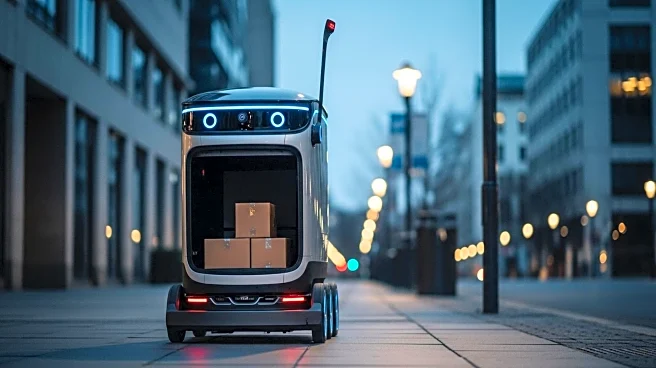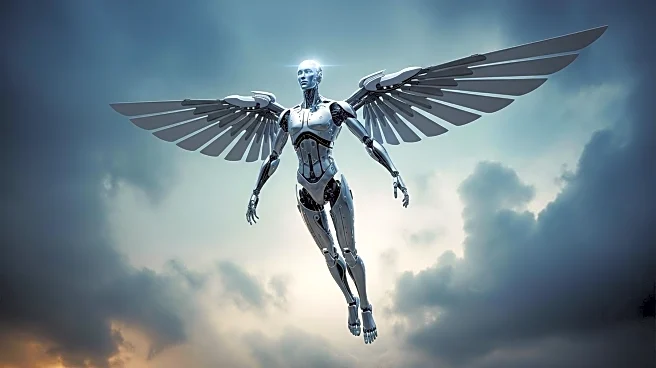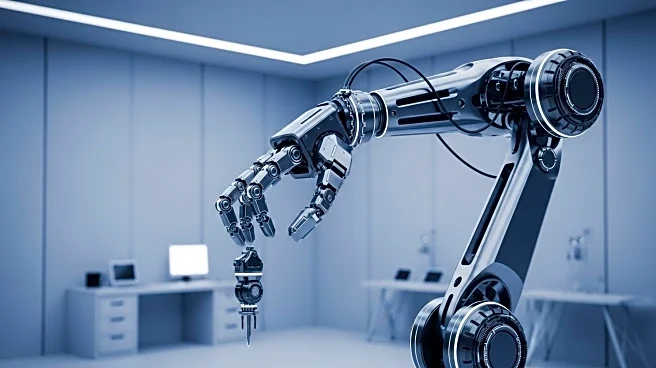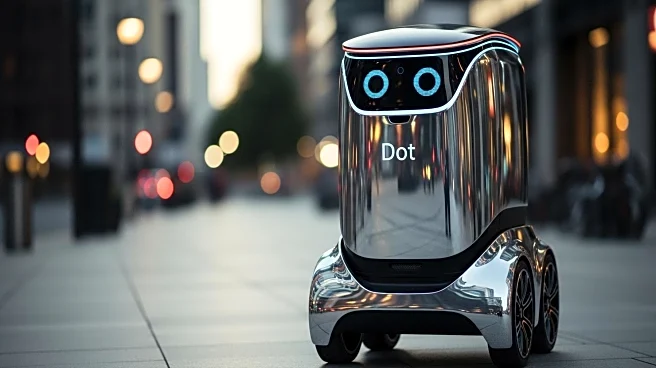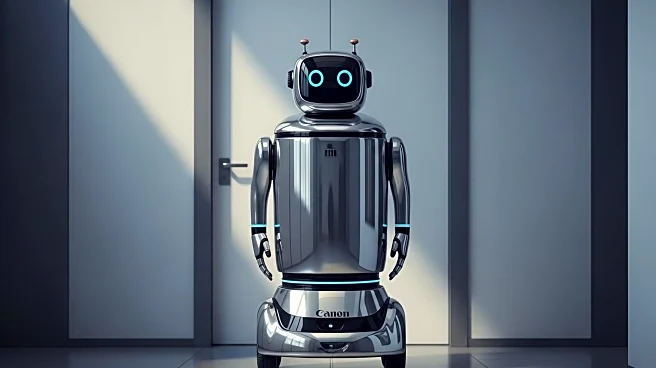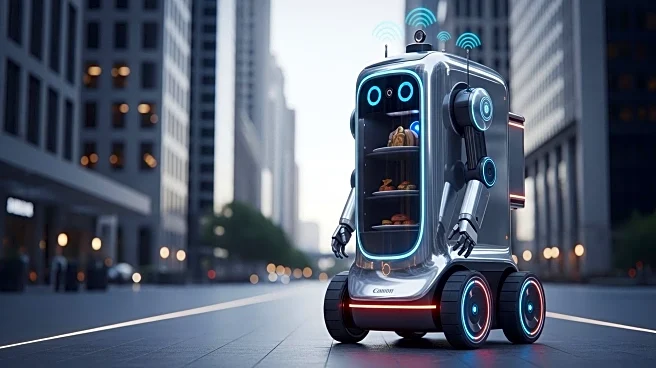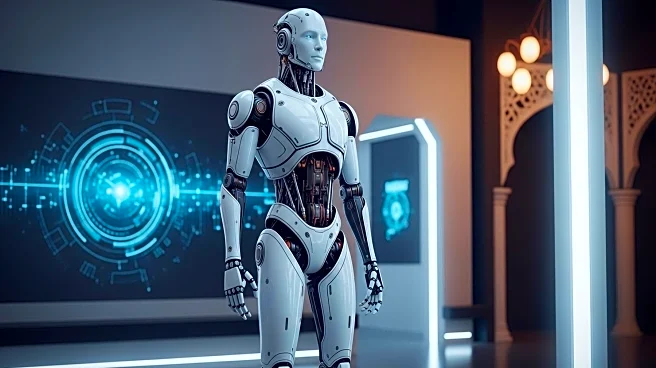What's Happening?
A Chinese robotics company, AheadForm, has introduced a hyperrealistic humanoid robot head, which has garnered significant attention and mixed reactions from the public. The head, part of the AheadForm Origin M1 series, is designed for research, interaction, and high-end display scenarios. It features 25 micro motors for expressive capabilities, cameras for visual perception, and built-in microphones and speakers for real-time audio interaction. The head can be mounted on various bases or integrated into larger robotic systems, making it suitable for emotion-driven AI studies and human-robot interaction research. While some viewers are impressed by the technological advancement, others find the lifelike appearance unsettling, likening it to a 'Frankenstein' creation.
Why It's Important?
The unveiling of this hyperrealistic robot head highlights the rapid advancements in robotics and artificial intelligence, particularly in creating lifelike machines. This development could have significant implications for industries focused on AI research, human-robot interaction, and service robotics. The ability to create robots with human-like expressions and interactions could enhance their utility in various fields, including customer service, healthcare, and entertainment. However, the mixed reactions also underscore the ethical and societal challenges associated with creating machines that closely mimic human appearance and behavior. Concerns about the 'uncanny valley' effect, where robots appear almost human but evoke discomfort, remain prevalent.
What's Next?
As AheadForm continues to develop its humanoid robotics technology, further advancements in the realism and functionality of such robots are expected. The company may explore commercial applications for their technology, potentially leading to wider adoption in industries that benefit from human-like robots. Additionally, ongoing public discourse about the ethical implications and societal impact of lifelike robots is likely to influence future developments and regulations in the field. Stakeholders, including policymakers, industry leaders, and ethicists, may engage in discussions to address concerns and establish guidelines for the responsible development and deployment of humanoid robots.
Beyond the Headlines
The introduction of hyperrealistic robots raises questions about the future of human-robot relationships and the potential for robots to replace human roles in certain sectors. As robots become more lifelike, there may be shifts in cultural perceptions of machines and their place in society. The development also prompts considerations of privacy and security, as robots with advanced sensory capabilities could collect and process vast amounts of personal data. Long-term, the integration of such robots into daily life could lead to changes in social dynamics and the way humans interact with technology.

